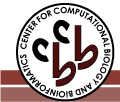 |
||||||||||||||||||||||||||||
 |
||||||||||||||||||||||||||||
| DP00039: Non-histone chromosomal protein HMG-17 |  |
| General information | |
| DisProt: | DP00039 |
| Name: | Non-histone chromosomal protein HMG-17 |
| Synonym(s): | HMGN2_HUMAN High-mobility group 17 High-mobility group nucleosome-binding domain-containing protein 2 High-mobility group nucleosomal binding domain 2 High-mobility group protein N2 HMGN2 |
| First appeared in release: | Release 2.0 (02/14/2005) |
| UniProt: | P05204 |
| UniGene: | Hs.181163 |
| SwissProt: | HMGN2_HUMAN |
| TrEMBL: | |
| NCBI (GI): | 123106 |
| Source organism: | Homo sapiens (Human) |
| Sequence length: | 89 |
| Percent disordered: | 100% |
| Homologues: | |
| Native sequence |
|
| Functional narrative |
HMG 17 is a nuclear protein of the HMG-14/HMG-17 protein family. In free solution HMG 17 has very little secondary or tertiary structure. The protein does not form an α-helix which could be expected from a 12% proline and 10% glycine content. There is no IR evidence for the formation of β-structure. HMG 17 is associated with the histones in nucleosomes and is believed to be a structural protein as well as an enhancer of transcriptional potential of chromatin. By modifying the structure of nucleosomes, HMG 17 affects the local structure of the chromatin leading to an increase in the rate of transcriptional elongation. HMG 17 undergoes its disorder to order transition when binding chromosomal DNA. |
| Map of ordered and disordered regions | |
  Note: 'Mouse' over a region to see the start and stop residues. Click on a region to see detailed information. | |
| Region 1 | |
| Type: | Disordered - Extended |
| Name: | |
| Location: | 1 - 89 |
| Length: | 89 |
| Region sequence: |
PKRKAEGDAKGDKAKVKDEPQRRSARLSAKPAPPKPEPKPKKAPAKKGEKVPKGKKGKAD |
| Modification type: | Native |
| PDB: | |
| Structural/functional type: | Function arises via a disorder to order transition |
| Functional classes: | Molecular recognition effectors Molecular assembly |
| Functional subclasses: | Phosphorylation Protein-DNA binding Acetylation Protein-protein binding |
Detection methods:
| |
References:
| |
| Comments: | |
| If you have any comments or wish to provide additional references to this protein or its disordered region(s), please click here to e-mail us. |
 |
 |
 |
 |
 |
 |
|
|
|